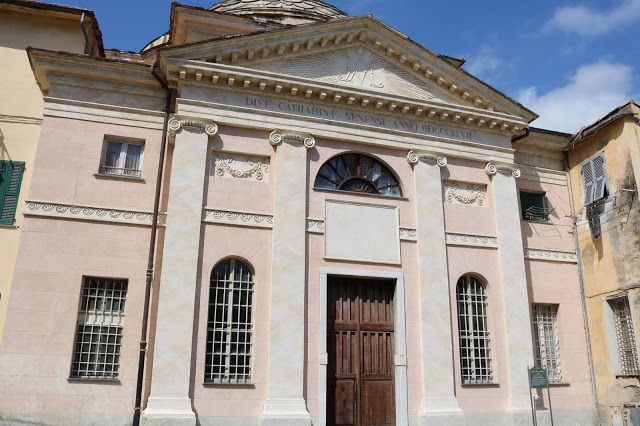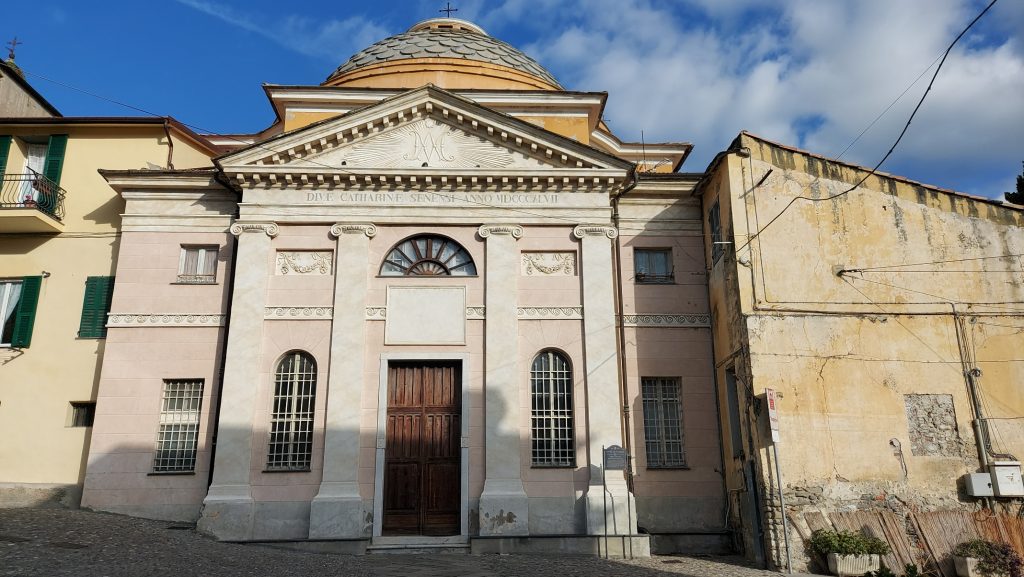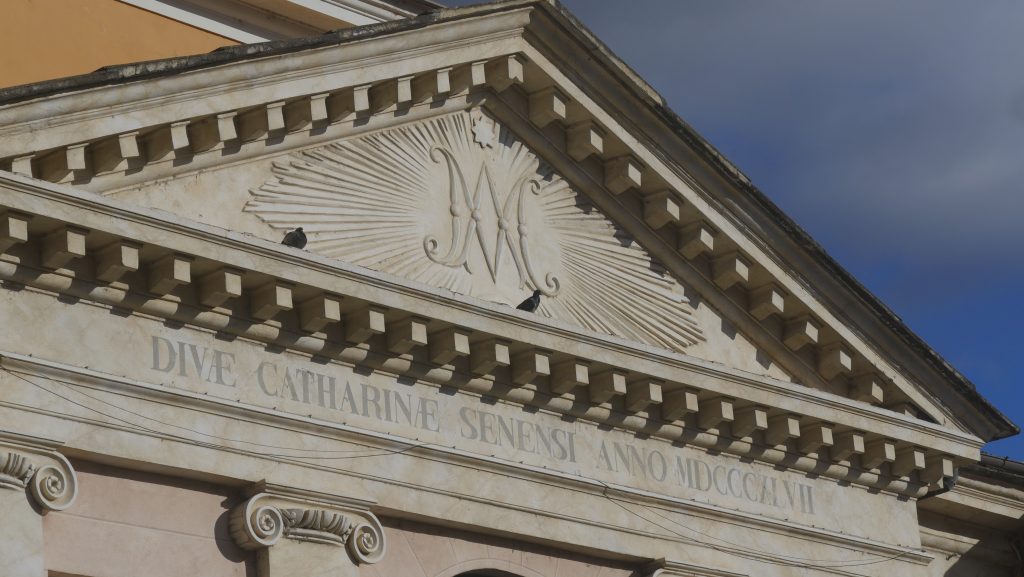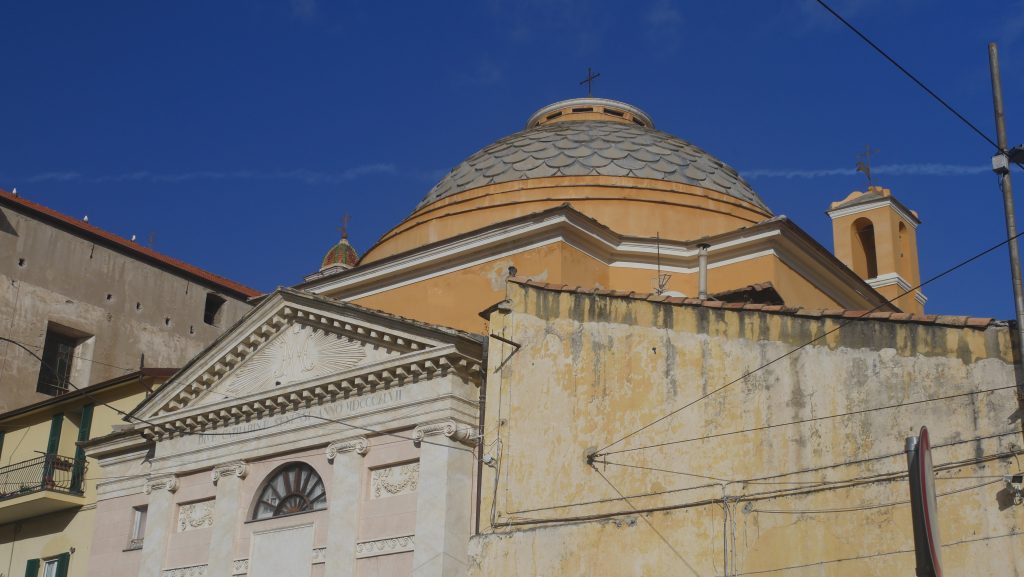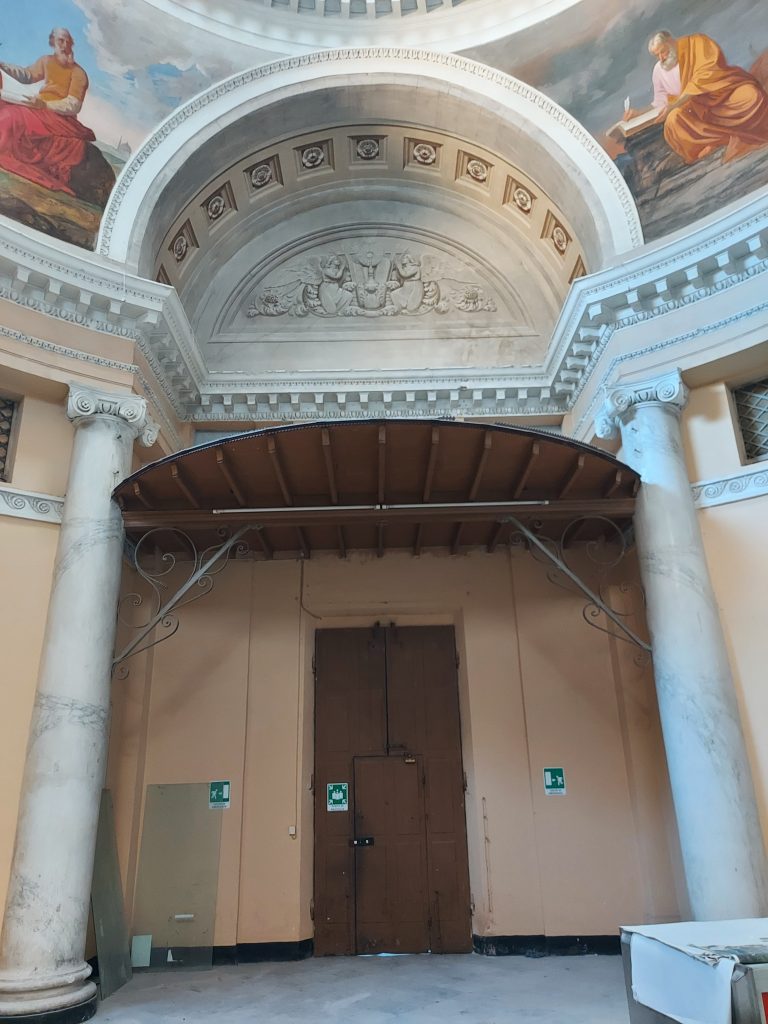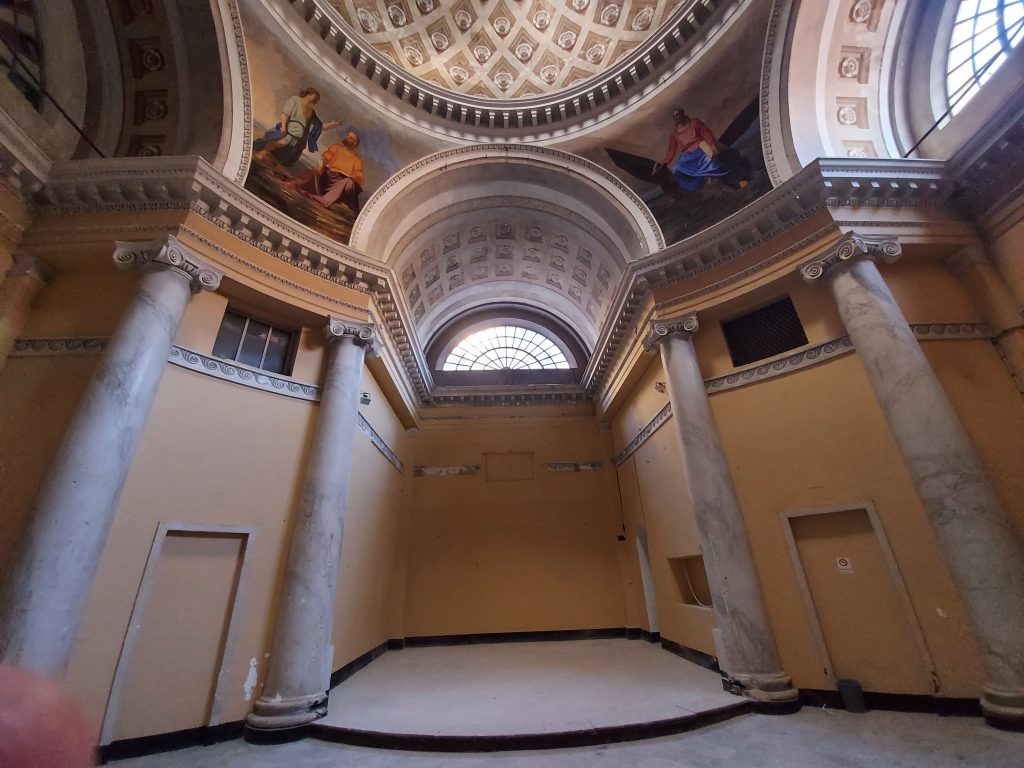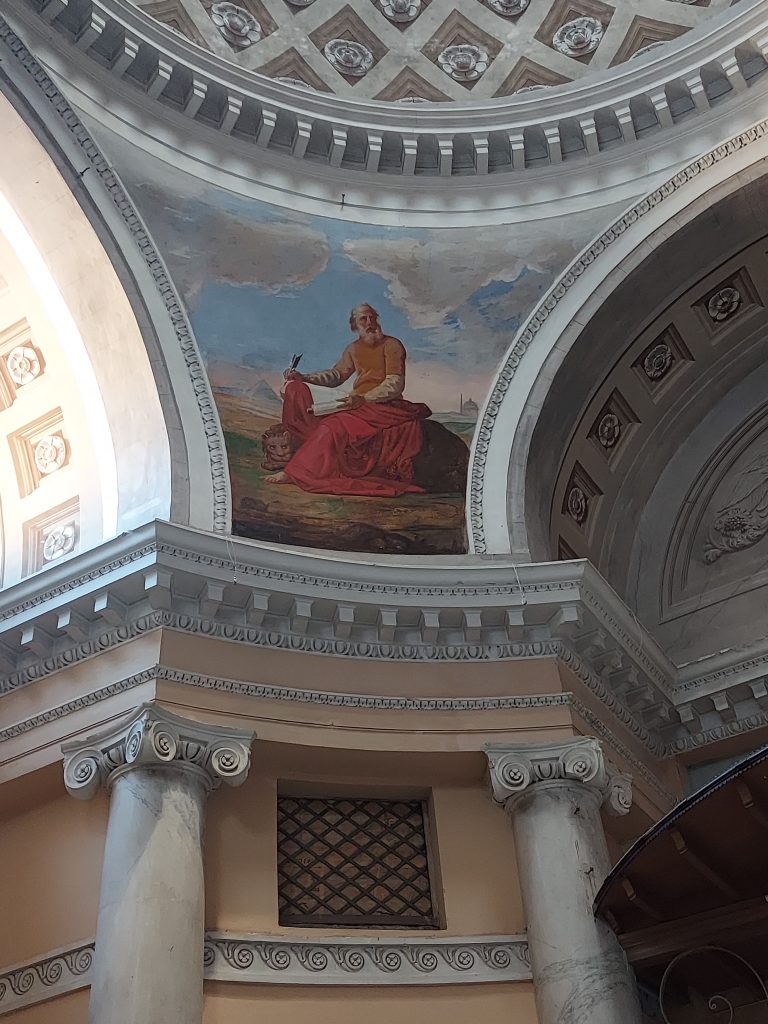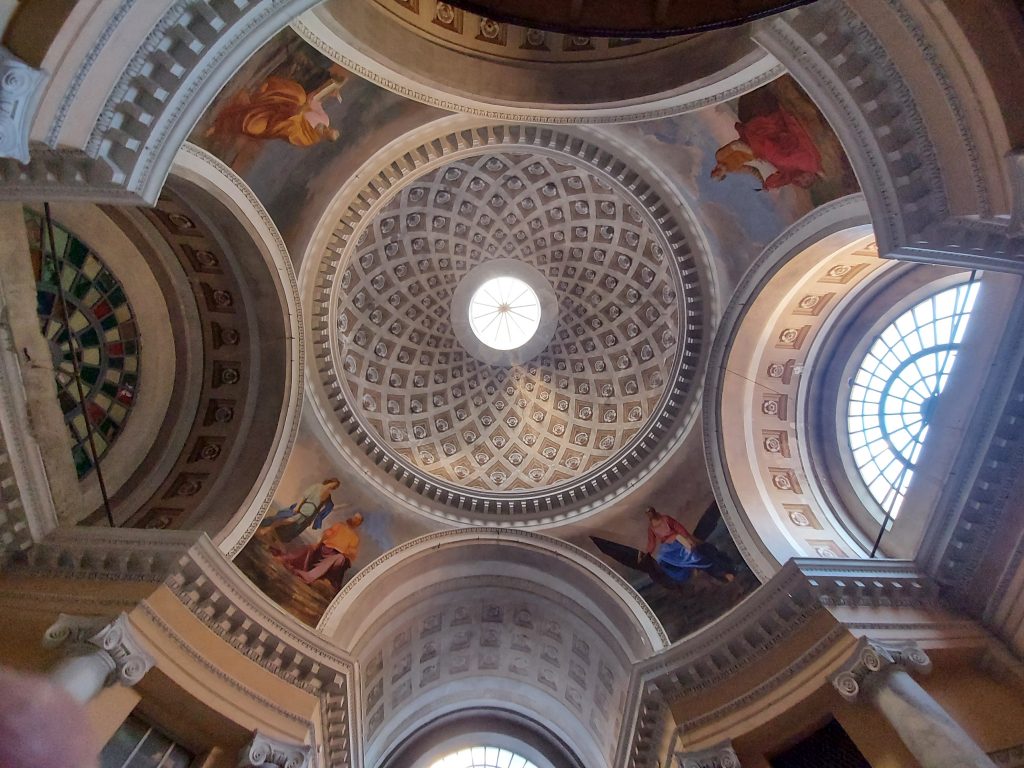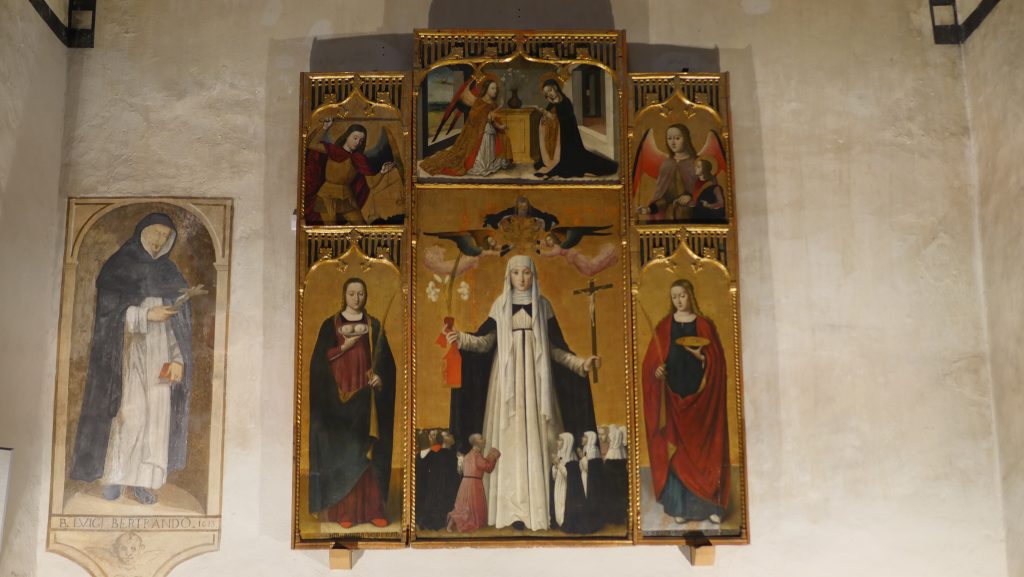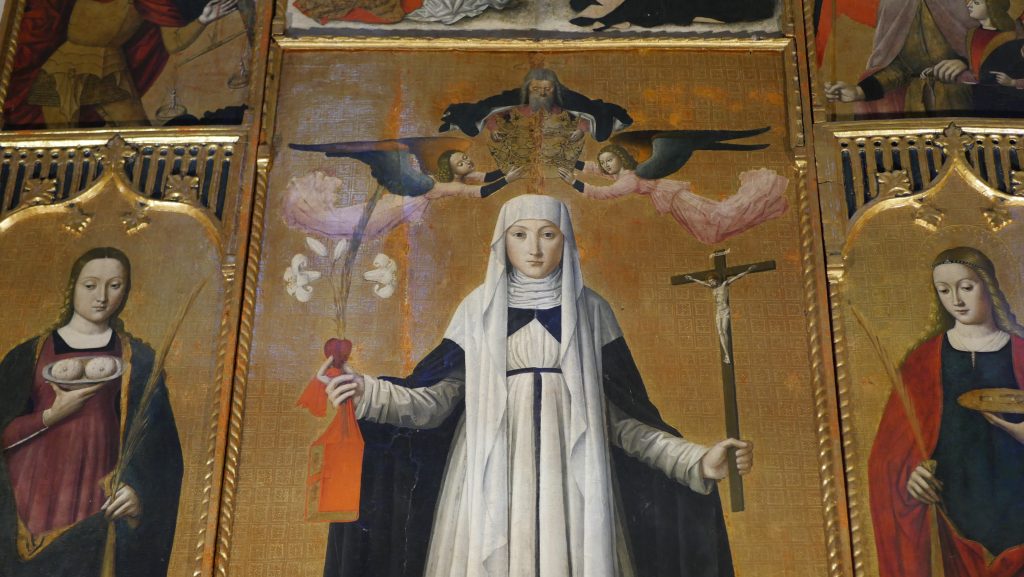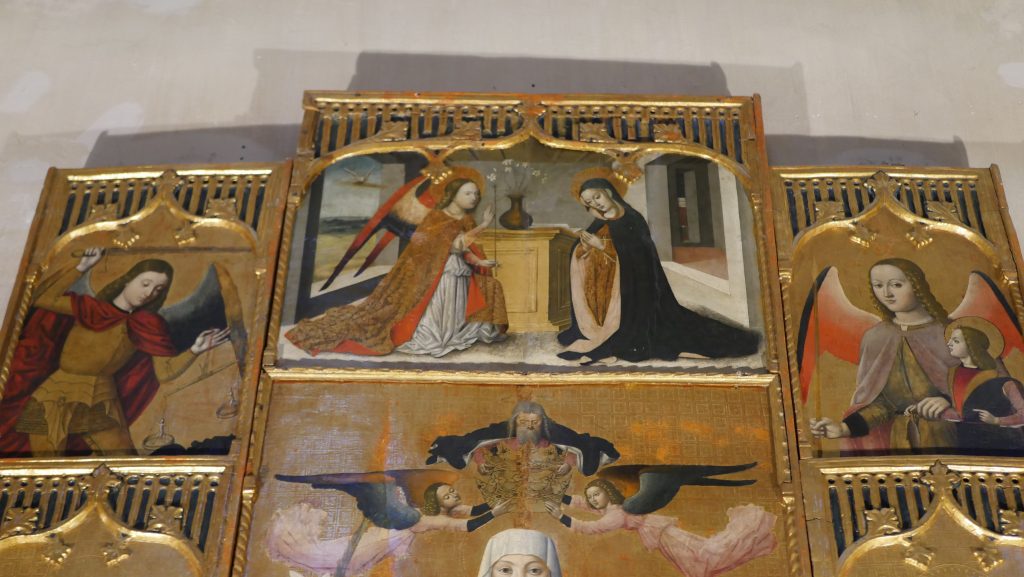
Santa Caterina
The presence of two significant feminine convents of Carmelite and Dominican nuns here in Taggia, built in the first half of the 18th century, provide us with some understanding of the involvement of the socially prominent families in the area. The option for unmarried daughters to take the veil, or to educate the younger generations of girls, was seen as a social investment of considerable importance. One of the convents is the complex of the Dominican Sisters of Taggia, facing both Piazza IV Novembre and Piazza Reghezza, right at the base of the hill to ‘il Colletto’. From the complex, you can admire the dome of the Convent Church of Saint Catherine of Siena. The positioning is the result of complex works that originate in the last will of Giovanni Battista Reghezza. He left a considerable amount of money to a cloistered female religious order in Taggia.
The phenomenon of cloistered convents being established in west Liguria was common between the mid-17th and 18th centuries. The ruling classes saw convents as a means of education for daughters awaiting marriage, and seclusion as a suitable arrangement for those who couldn’t find a husband. Following Reghezza’s last will, the people from Taggia had to wait another 80 years before, in 1707, the seclusion of the Dominican order was authorised by the bishop, Giorgio Spinola. The cloistered convent of Taggia appears to be a subsidiary of the one at Chieri, Piemonte. This choice may well have been politically motivated, as Chieri was controlled by the Savoy, whilst Taggia was part of Genoese territory.
The initial positioning of the convent was haphazard: it was among a group of houses along the north-eastern borders of the town, where a primitive chapel and an altar had been built. Later, the convent needed to be enlarged. The Saint Catherine complex diverges from the stylistic continuity of the 16th century city walls, bringing a classical touch to the town. The rustic ashlar portal was refined with the relief motives of the windows, giving the structure a dynamic effect.
Between the 17th and 19th centuries, the convent came under extreme hardship, right after the French Revolution and Napoleonic occupation. Gradually, with the measures introduced in 1866, the Italian Kingdom proceeded with the expropriation of goods from religious congregations, allocating them to public use. Even the Dominican sisters were gradually forced to leave the convent, before abandoning it entirely and moving first to Curlo Palace, then Spinola Palace, where they were to keep the tradition of sewing and embroidery alive. In 1895, the buildings were given to the XII regiment of Bersaglieri, and the new barracks was named after General De Sonnaz.
It was only after the First World War, in 1920, that plans were made for the building to be given back to town management to house female schools and the Santa Teresa complex to host the local hospital. Unfortunately, this initiative did not come to fruition. It was only returned to the administration in 1944, and, after assessing the damage caused by military occupation, the necessary restorations began. A final decision regarding the purpose of the complex was still lacking, though. During the 20th century, the church was dedicated to public use, repurposed as a communal theatre and later as offices for the justice of the peace.
From an artistic point of view, Santa Caterina Church can be classified as late neoclassic in style. This is clear from the facade, with its smooth ashlar that ends in a frieze, and the size of the dome that looms overhead. The areas allowing access to the church are spread in a fairly disorganised manner, but are full of elegance in their vaults and decoration. The building is structured around a wide central opening, entirely covered by a dome with a central skylight, which provides a comforting glow, along with the wide lunette windows. The space is unified by a cornice that runs along the entire perimeter, held up by simple ledges. Lastly, we must not forget the edges on which the dome’s pendentives rest that are enriched with figures and decorative elements.
Photos
Video






